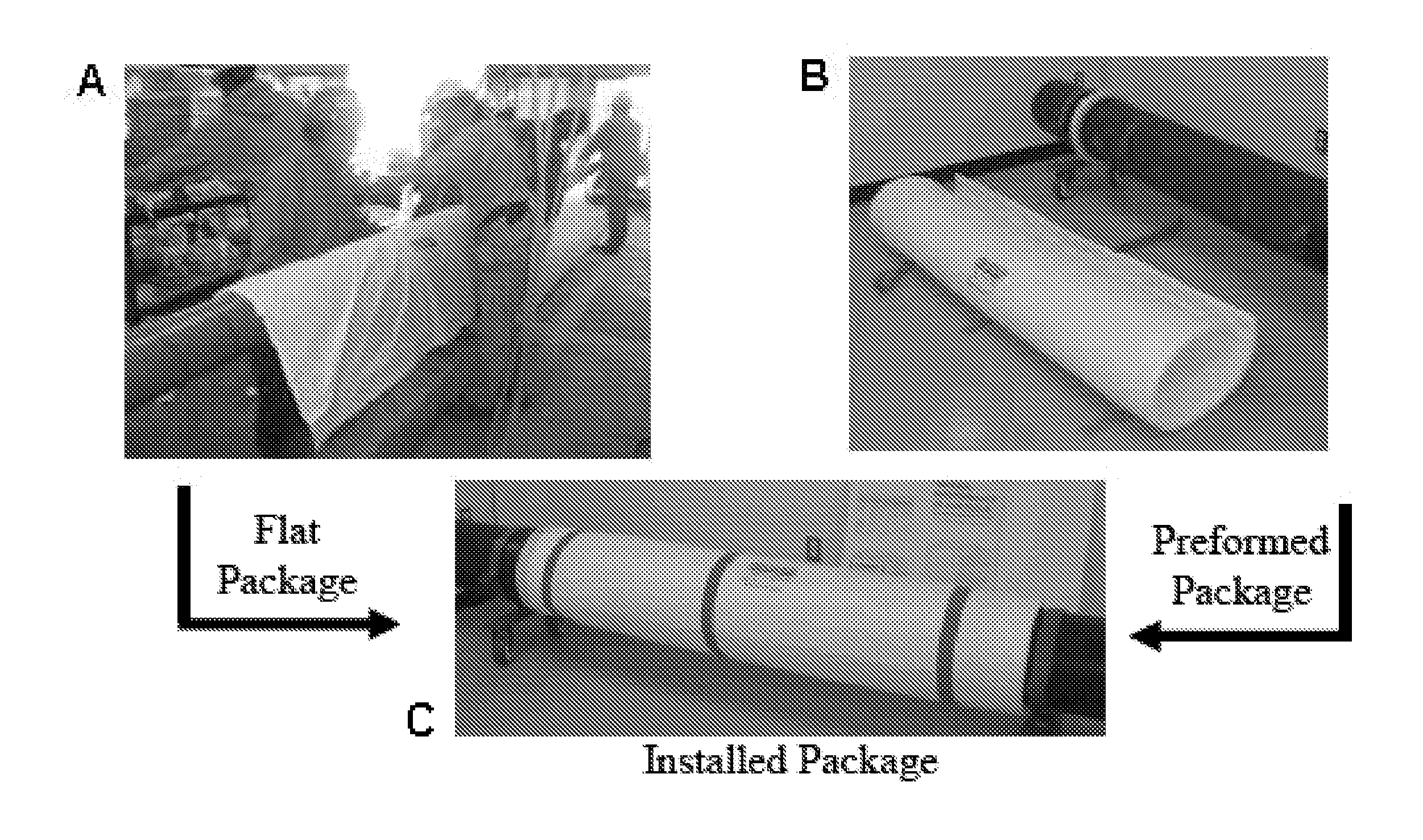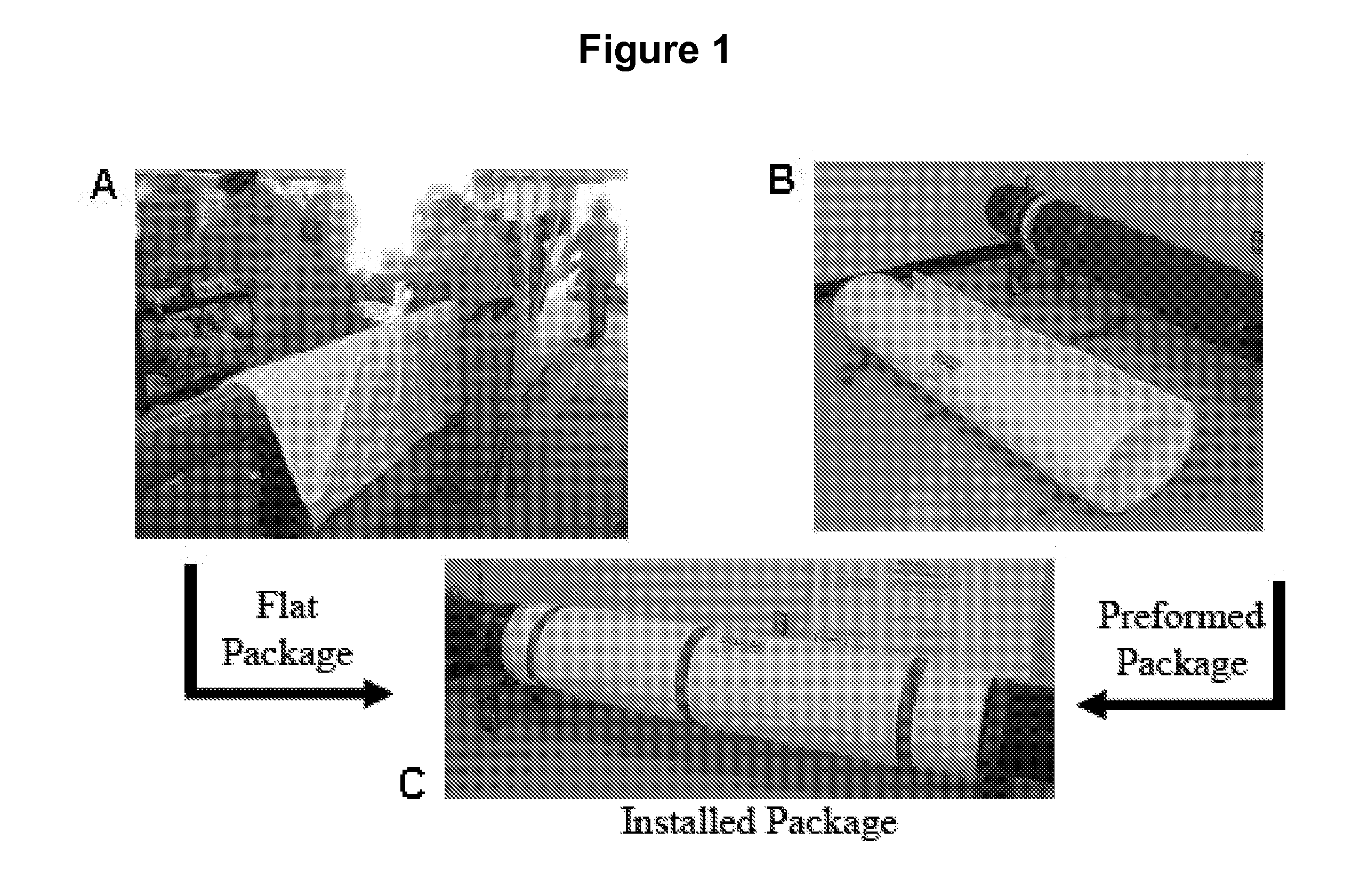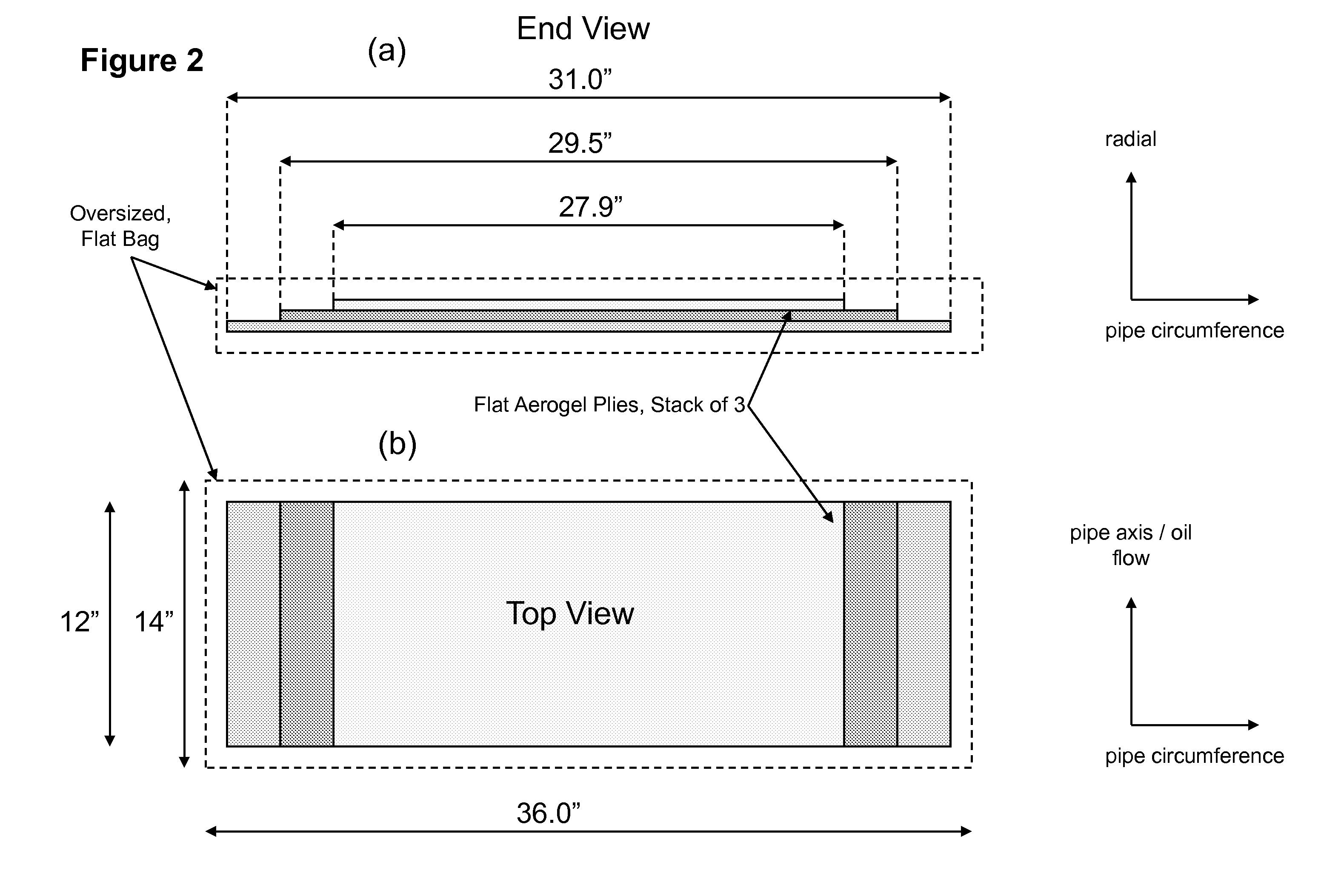Aerogel insulation systems for pipelines
a technology of pipelines and aerogel, which is applied in the field of materials packaging, can solve the problems of less efficient time-consuming and laborious process, and negatively affecting the thermal performance of the insulation, so as to maximize the packing out for shipping, reduce installation labor, and increase efficiency
- Summary
- Abstract
- Description
- Claims
- Application Information
AI Technical Summary
Benefits of technology
Problems solved by technology
Method used
Image
Examples
embodiments
[0065]Embodiments of this invention describe a method for forming a package with 3D, annular geometry, such that the package is fabricated and / or shipped in a flat state and curvature, preferably annular geometry, can be later imparted to the packaged material via the application of heat. The packaging, termed herein a “smart-bag,” is made of two heat-shrinkable films. The films have different elongation or shrinkage properties such that when heat is applied, the films elongate or shrink to impart curvature to the flat package contents. For example, two films may be used to package an insulation material for installation around a pipe. One film, intended to be in contact with the outer surface of the pipe, shrinks to a shorter circumferential length than the other film representing the insulation “outer surface” that would be present subsequent to installation of the package. This difference in shrinkage causes curvature to be imparted to the package, thus assisting in the installat...
example 1
Imparting Curvature to Flat Insulation
[0092]Two pieces of heat shrinkable film of different shrinkage properties were placed around a 12″×12″×¼″ flat sheet of aerogel and heat sealed around the edges. A heat source was applied to the film, which shrank and imparted curvature to the otherwise flat, bagged piece of insulation.
example 2
Design of a Smart Bag to Contain Insulation for Installation on an Oil Pipeline
[0093]Given a pipeline with an outer diameter of 8.625″ and three planar sheets, each 0.25″ thick, of aerogel blanket with fibrous batting (see US Patent Publication No. 20020094426) that would give 0.75″ of total insulation thickness after stacking, and that are cut to lengths permitting the formation of a closed annular geometry after being curved for fitting around the pipeline (see FIG. 2), initial dimensions are proposed for a smart bag. With the ply stack-up of FIG. 2 measuring 31″×12″×0.25″ for the largest ply, and planning a slightly oversize bag to place the insulation into, the smart bag is initially proposed to measure 36″×16″.
[0094]The dimensions having been determined, a shrinkage calculation is performed by calculating the dimensions for a package with annular geometry, an inner package circumference to match the pipeline's outer circumference, and an outer package circumference taking in to...
PUM
| Property | Measurement | Unit |
|---|---|---|
| pressure | aaaaa | aaaaa |
| pressure | aaaaa | aaaaa |
| pressure | aaaaa | aaaaa |
Abstract
Description
Claims
Application Information
 Login to View More
Login to View More - R&D
- Intellectual Property
- Life Sciences
- Materials
- Tech Scout
- Unparalleled Data Quality
- Higher Quality Content
- 60% Fewer Hallucinations
Browse by: Latest US Patents, China's latest patents, Technical Efficacy Thesaurus, Application Domain, Technology Topic, Popular Technical Reports.
© 2025 PatSnap. All rights reserved.Legal|Privacy policy|Modern Slavery Act Transparency Statement|Sitemap|About US| Contact US: help@patsnap.com



